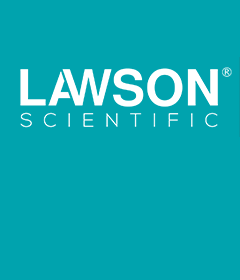News
Common problems encountered with disrupted cells
1. Escherichia coli expresses exogenous protein. When sonicating, use PBS containing 1% triton-X-100 to suspend, and then the effect of ultrasonication is better. The effect of 1% triton-X-100 is still very obvious. Some other bacteria also work, such as Streptomyces. After expressing the recombinant protein, use an ultrasonic cell disruptor to disrupt the cells, use an ice bath, 400w, disrupt for 2s and stop for 1s, but a lot of foam will be generated after a while, which will affect the disrupting power. This is the case for pbs and tris buffers. The fragmentation is incomplete, and the target protein is in these unbroken cells, what should I do?
Analysis: The bubbles are generated because the probe position is not properly placed; the probe must be close to the bottom, about 0.5-1cm; the power will vary depending on the instrument, but you can observe the liquid level, there are fluctuations but not too violent; you can choose ultrasonic cells The crusher stops for 3s and stops for 10s, and crushes 20-30 times; pay attention to the position of the horn, and adjust it in time if the sound is wrong; consider the bacteria concentration. When crushing, try to increase the volume, and the strength should not exceed 60%; try to crush for 8s and stop for 8s. For some bacterial proteins, it is difficult to dissipate heat and cause the protein to denature and generate bubbles. The pause time can be slightly longer. This is often the case Found in the protein in the form of inclusion bodies.
2. What are the sonication conditions for Streptomyces (actinomycetes)?
Analysis: Actinomycetes belong to the gram-positive bacteria (Eubacteria) branch group with high (G+C) mole percentage (mol%) on the phylogenetic tree of prokaryotes. Although it has the unique molecular biological characteristics of prokaryotes, But the chemical composition of the cell wall varies widely among its different groups. When doing Escherichia coli ultrasound, the method of 400W, breaking for 5s and stopping for 5s has a good effect, but when used on Streptomyces, it is generally ineffective due to the difference in cell wall composition. The pretreatment of Streptomyces (actinomycetes) ultrasonic fragmentation is generally configured to a certain concentration of bacterial suspension. The specific conditions used when using an ultrasonic cell disruptor were as follows: take the 24 h culture medium of bacteria and centrifuge at 5 000 r/min for 5 min to collect bacteria; wash three times with Na2HPO-NaH2PO buffer at pH 7.5, Use this buffer to make a 1:3 bacterial suspension. Put it in a 40 mL large plastic test tube; put the large plastic test tube in an ice bath, and use an ultrasonic cell disruptor to break it (power 200W, 1/2" probe, break for 30s, intermittently for 30s); break the liquid at 12 000 r/min High-speed refrigerated centrifugation for 30 min to collect cell debris and supernatant. The cells can also be washed with pre-cooled normal saline or pH8 Tris-HCl once. In addition, the ultrasonic dose varies greatly with the amount of samples and cells , the power can reach 400-600w, break for 5s, stop for 5s, ice bath, and add PMSF with a final concentration of 1 mM. In order to determine the appropriate ultrasonic intensity and frequency, it is necessary to observe microscopically at any time to observe whether the bacteria are completely broken.




